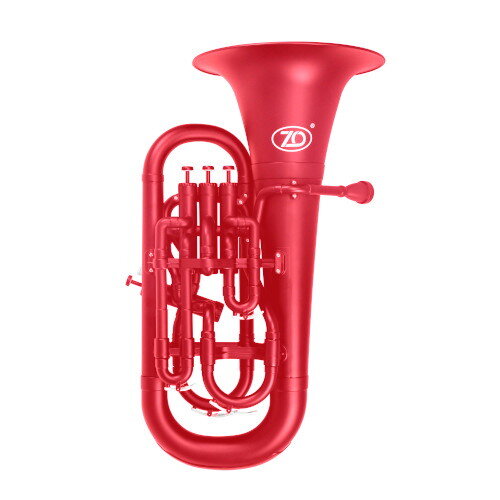







Learning a Music Instrument at the RCM
Learning a Music Instrument at the RCM
learning an instrument
Which instrument!??
Learning a musical instrument is enormous fun and very rewarding. But which instrument should you play?
Each person has a different personality, feelings and tastes. Therefore, no two people can like exactly the same thing in music. We each like a different aspect of the music we hear and the parts of the music we like to listen to.
The following pages are a short guide to the carious instruments offered at the Riverina Conservatorium of Music. We hope you find the one that really makes you feel happy!

Learn the Oboe!
Learn the Oboe!
The Oboe
Like clarinets, oboes are members of the woodwind family. They are commonly made of plastic or wood with metal keys that make it easier for players to create all the notes they need. Like other woodwind instruments, different notes are created by putting down and taking off fingers in different combinations.
Oboes might look a bit like a skinny clarinet; however, they are really quite different! Oboes use similar fingers to a recorder, are slightly funnel shaped inside, and they also use a double reed to produce their sound.
An oboe reed is made of two little pieces of cane attached to a tiny metal tube that fits snuggly into the top of the instrument. The reed is placed in the mouth and blown through. This makes the reed vibrate, and helps create the oboe’s unique sound.
Oboe: Double Reeds
The oboe can be found in a wide range of small and large ensembles like orchestras and concert bands. It is primarily a classical instrument, but oboes sometimes feature in rock music and pop culture. Homer is famously known for calling this instrument the ‘O-MA-BOE’ in one episode of The Simpsons.
Because of its haunting sound and ability to play both lyrical and fast music, composers like to write solos for the oboe. In the famous work ‘Peter and the Wolf’, the duck is represented by the oboe. The oboe is also often featured in movie soundtracks; for example, the song ‘Gabriel’s Oboe’ from the movie The Mission.
Many oboe players also play a larger version of the oboe, called a cor anglais (or English horn) – which is kind of funny, because the instrument is neither a horn or English! Oboe and English horn ancestors (like snake charmers) can be traced back to ancient times in Asia and the Middle East – which makes oboes nearly as old as flutes!
If you are interested in learning the oboe, please contact the Riverina Conservatorium of Music.

Bassoon
Bassoon
The bassoon
Bassoons (not baboons!) are very unusual (and cool) low-pitched members of the woodwind family of musical instruments.
Bassoons can be made of plastic or wood with metal keys that make it easier for players to create all the notes they need. Their tube is so long they are folded in half so they can be played more comfortably!
Like other woodwind instruments, different notes are created by putting down and taking off fingers in different combinations. There are quite a few keys on the back of the instrument, so bassoon players need agile thumbs!
Bassoons use a double reed to produce their sound. The reed is made of two little pieces of cane carefully tied together with twine and wire. The reed is placed in the mouth and blown through. This makes the reed vibrate, and helps create the bassoon’s unique sound.
The reed is attached to the end of a curved metal tube called a crook (or bocal) which is inserted into a hole in what looks like the middle of the instrument, but is actually the top!
Bassoons are musical chameleons. The bassoon can be found in a wide range of small and large ensembles like orchestras and concert bands. There are even jazz bassoon players!
Even though bassoons mostly read mostly bass notes, they can actually play quite high. Stravinsky’s Rite of Spring contains a famous bassoon solo that is written right up in the treble notes! Bassoons can play haunting or expressive music, fast and sprightly music, and even comical, creepy, or menacing sounding music. Something for everyone! Bassoons begin Mickey Mouse’s ‘Sorcerer’s Apprentice’ theme (by Dukas) in Disney’s animated film Fantasia, and the bassoon is also featured throughout the soundtracks of all of the Jason Bourne movies.
The Bassoon’s Double Reed is very similar to the Oboe’s double Reed.
If you are interested in learning the bassoon, please contact the Riverina Conservatorium of Music

Euphonium
Euphonium
The Euphonium
Euphonium
Euphonium Intro - Use of Instrument
Welcome to the brass instrument family – this instrument is called the Euphonium – and it is mainly played in concert bands, brass bands, sometimes in classical orchestras, and in chamber music. Not only is this instrument a beautiful solo instrument, it is also used to play some fantastic bass parts.
What Instrument Looks Like - How Instrument Works - Instrument Parts
The main part of the Euphonium that changes notes are the valves (demonstration). The sound is produced by you from the mouthpiece which then comes out of the flared end section – called the Bell.
What is it Made Of - Materials
These instruments are mostly made of yellow brass but this Euphonium is coated in silver. There is also a very cool range of plastic euphoniums that work well for young players. They come in a great range of colours, are durable, very light to hold and carry and are very affordable.
Example of Sound It can Make - How Do We Get a Sound?
Lip buzzing or MP buzzing.
MP in instrument – slight twist.
Holding and supporting instrument.
Blow sounds (Demonstration).
Hopefully you really enjoyed the sound of the Euphonium and that this video will give you an idea about how the instrument works.

Trombone
Trombone
The trombone
Trombone Intro – Use of Instrument
Welcome to the brass instrument family – this instrument is called the Trombone – and it is played in many styles of music – classical orchestras, jazz, pop, rock, Latin groups, concert bands, chamber music, brass bands – the list goes on...
How Instrument Works - Instrument Parts
The main part of the Trombone that changes your notes is the Slide and if you’re not careful or lock the slide, the slide can come off like this! You create the sound with this mouthpiece and the sound then comes out of this section – called the Bell.
Hopefully you enjoyed the sound of the Trombone and that this video will give you an idea about how the instrument works.
What is it Made Of - Materials
The trombone is mostly made of yellow brass, but there is also a very cool range of plastic trombones that work well for young players. This one is called a PBone and they come in a great range of colours, are durable, very light to hold and carry and affordable.
Example of Sound It can Make - How Do We Get a Sound?
Lip buzzing or MP buzzing.
MP in instrument – slight twist.
Holding and supporting instrument.
Blow sounds (Demonstration)

Violin
Violin
The violin
The violin is part of the string family, whose other members are the double bass, cello, and viola. The violin is known to be the ‘baby’ of the family as it is the smallest and has the highest voice. The highest notes on the violin are on the E string, but it is also capable of playing more mellow and broad sounds, making it a very versatile instrument.
The violin produces sound with the help of the bow. Like the violin, the bow is made of wood, but also has horsehair attached to it. You can tighten and loosen the horsehair using the screw at the bottom of the bow. When the bow is drawn along the violin strings, the string vibrates. These vibrations go through the bridge of the violin into its body, are amplified, and come out through the f-holes to make the violin’s distinctive singing sound.
The violin is a very social instrument – it can collaborate with a wide variety of instruments. It often plays with the piano, but can also be played with the guitar, cello, in a string quartet and many different combinations of chamber ensembles.
Probably the most well-known setting for a violin is within an orchestra, where it makes up two whole sections! Together, these sections make a beautiful shimmering sound, and are almost always chosen to receive the melody line (the recognisable tune in a piece), which means they are always very busy members of the orchestra!
However, the violin is not just used in Orchestral playing and classical music – it feels just as at home in folk bands, jazz bands, and in pop music. In fact, you have most likely heard the violin played in the background of your favourite movies.
If you like the sound of the violin, it could be the instrument for you! For more information on receiving lessons, please contact us here at the Riverina Conservatorium of Music.

Viola
Viola
The viola
This page is going to introduce you to the VIOLA!
The viola looks a lot like the violin and belongs to the same family: the String Family.
All string instruments have a hollow wooden body, a wooden neck and scroll, and 4 tuned strings that are held under tension that we use to make the sound.
To make that sound you can pluck the strings or stroke them with the bow.
The viola sounds like a violin with a deep voice. You can see the difference when we hold a violin next to the viola, it becomes clear that the violin is much smaller and sounds much higher.
The viola is actually strung like a cello (one octave higher) making it sound more like a little cello than a big violin. It can sound quite low.
This unique ability of the Viola to play high with the Violins and low with the Cellos is what makes it so valuable in ensembles. We are always found right in the middle of any group: whether a huge Symphony Orchestra, a Jazz Band, or a tiny Trio, the Viola is always at the heart of the sound. We can also play solo!











